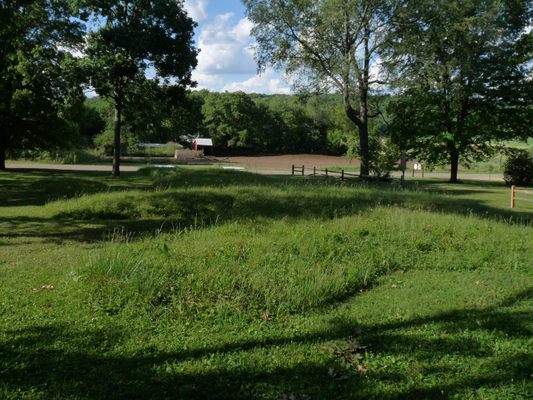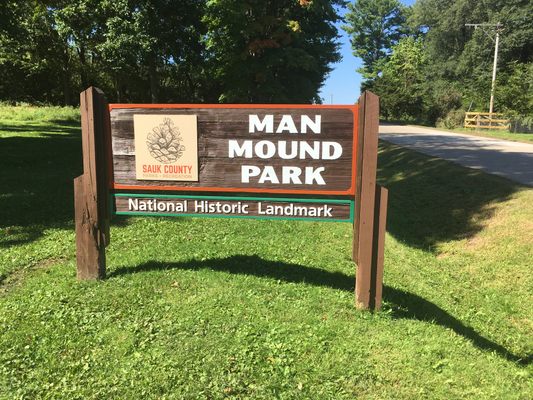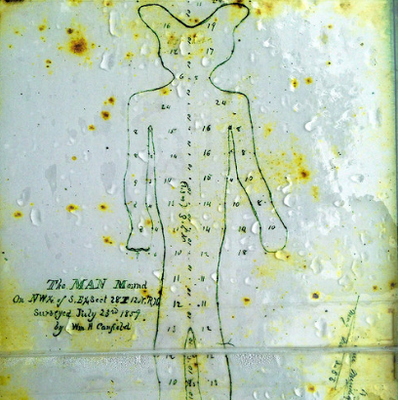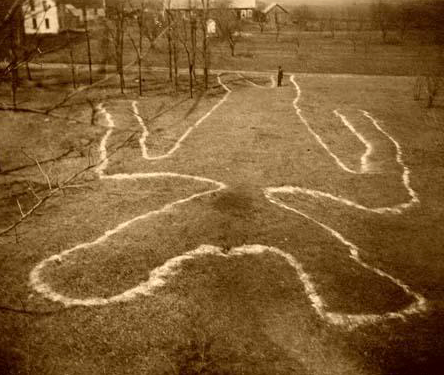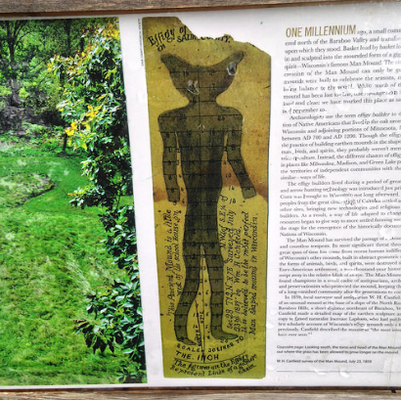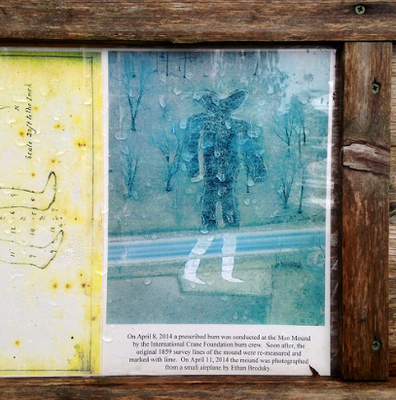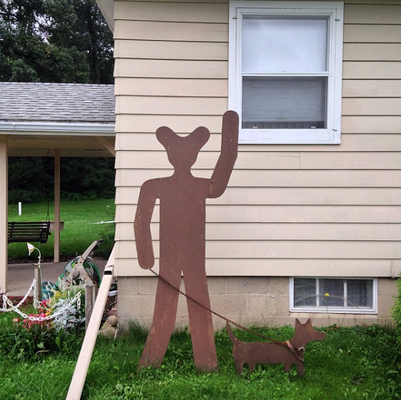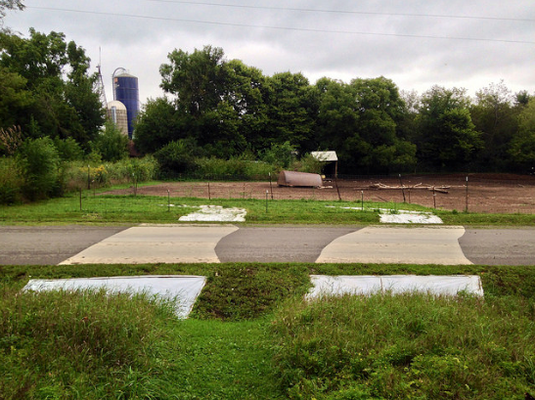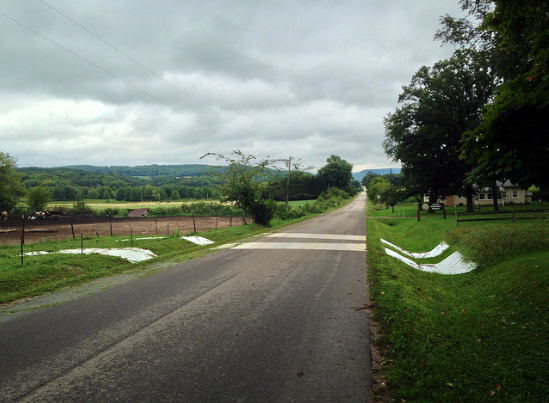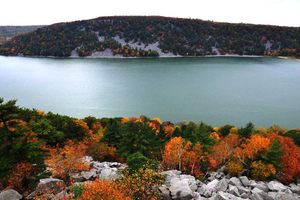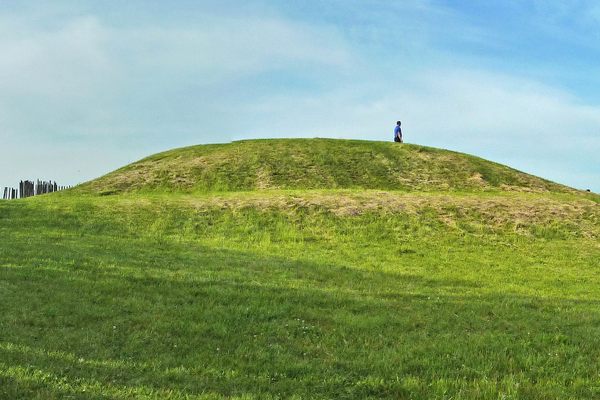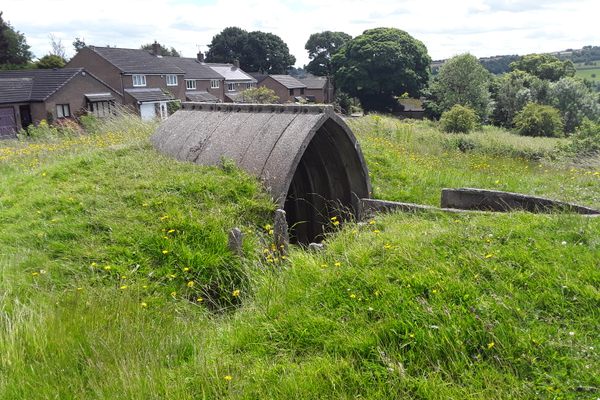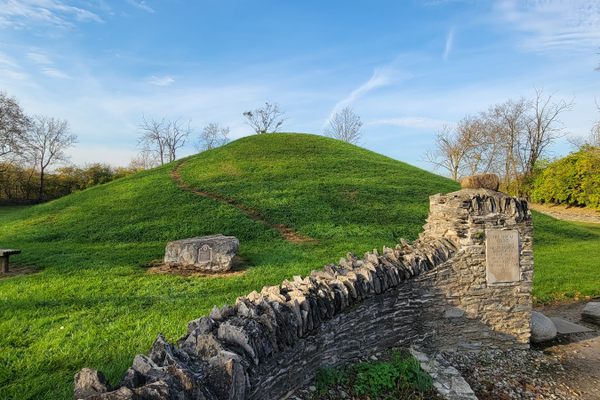About
Sprawled across a rural county road in the rolling hills of southern Wisconsin are... the severed legs of an ancient humanoid giant?
The Mound Builder civilization that once thrived in the American heartland left thousands of earthworks scattered over the land, mostly next to rivers. These piles of carefully-crafted earth almost certainly had a sacred significance to their makers, but archaeologists and even other Native Americans don't know for sure how they were used or why they were built. Over a thousand years old, the unique "effigy mounds" were made by people who left no written record and whose culture disappeared long ago.
Hundreds of these fascinating effigies, most of them shaped like animals, still dot the Upper Midwest and parts of the South. When white settlers first moved into the Ohio and Mississippi valleys in the 1800s, they would have found thousands of these effigies on the land as their ploughs and axes peeled back the wilderness. Some of these earthworks were quite tiny, some large. The majority vanished into agriculture, deliberately or accidentally wiped out. (Many that survive today are barely discernible from the ground, and they're often hard to appreciate without getting an aerial view.)
Effigy mounds depicted both real and mythological creatures–from the bears scattered along the ridge overlooking the Mississippi at Effigy Mounds National Monument in eastern Iowa to the tadpole-like figures, frogs, thunderbirds, deer, beaver, cats, turtles, serpents and other more problematic beasts that (amazingly) still survive in parts of Wisconsin, Minnesota, Illinois, and southern Ohio. Some, but by no means all, mounds were used for human burials. Man Mound may indeed contain men, or at least human bones: we don't know, because it's never been excavated.
One of the strangest effigies, Man Mound is located in a tiny county park four miles northeast of Baraboo, Wisconsin. True to its name, the mound is the only surviving example of an anthropomorphic effigy mound. (There were once at least five.)
Yet what kind of a person it depicts is a mystery. Some speculate that the "man" is a shamanic figure, since he is toting two horns on his head–perhaps part of a bison headdress. Another plausible theory is that the "man" is actually a Ho-Chunk (Winnebago) hero-god who descended to earth to fight giants and evil spirits. Archaeologists believe that Man Mound was built in the Late Woodland Period, probably around 1000 A.D., about the time Leif Erikson sailed to America. (The chances of the mound depicting a Norse visitor from across the sea, wearing an equally farfetched helmet, are extremely unlikely, but tantalizing to imagine...)
Theories about a "Lost Race" from the Old World that came to America and built the mounds actually filled the annals of antiquarian fantasy in the 19th century. Historians once speculated that the creators of Man Mound and the other amazing earthworks dotting southwestern Wisconsin were refugees from Atlantis or even the Lost Tribe of Israel–partly because they deemed Native Americans too uncivilized to create lasting monuments.
We'll never know how many of these amazing zoomorphs tattooed the wild watershed of the Upper Mississippi two hundred years ago. Farming and road construction demolished at least 75% of them. Many farmers found these bumps on their property more annoying than interesting–and impediments to progress. As a pioneer of Sauk County, Wisconsin, wrote: "We were rather irked by the large number of Indian mounds we had to plow down. There must have been at least 25 on our land… Some were shaped like animals and some like birds, and all were from three to five feet high... I suppose we should not have destroyed them. But they were then regarded merely as obstacles to cultivation, and everybody plowed them down."
Fortunately, some of the most eye-catching mounds were mapped around the year 1840 by a mining expert from Pennsylvania, Stephen Taylor (1805-1877). Working out of the U.S. Land Office in Mineral Point–the heart of the Wisconsin lead-mining district–Taylor meticulously measured and sketched many of these ineffable relics before most were wiped out forever. Taylor's drawings are bizarre and seem like artwork–dreamwork–in themselves. He documented at least two of the other anthropomorphic effigies and published his drawings in Silliman's American Journal of Science in January 1843.
Man Mound was first surveyed by William H. Canfield in 1859. The 214-foot-tall giant's legs were cut off by Man Mound Road in the late 1800s. In 1905, the whole figure was about to be ploughed over. Fortunately, H.E. Cole, a local photographer, and A.B. Stout, a science teacher at Baraboo High School–with the help of the Wisconsin Federation of Women's Clubs–drummed up enough money to buy the property from the farmer who owned the land. Man Mound Park was dedicated in 1908.
Maintaining the visibility of the mound is an annual task, however. Bird's-eye views show something unique, but to spot a man there from ground-level can be tricky, especially since the missing legs have had to be painted onto the road. The part of the legs that run through a culvert are outlined in plastic and what were once feet lie in a cow pasture. (Only the body above the knees survives intact.) Cole and Stout knew how hard it was to show a human figure in the grass: photographs of mounds from a hundred years ago usually show effigies outlined in chalk to improve visibility. The effect from the air can be stunning.
Today, every spring, technicians set Man Mound on fire to root out lawn grass and help the survival of native prairie grass–another relic of this ancient place, where the prairie, like the mounds, was almost wiped out by the ruthless plow and spade.
Related Tags
Know Before You Go
Man Mound Park sits about four miles northeast of Baraboo. Follow State Road 33 to Man Mound Road. A few signs point the way. The park is free.
Community Contributors
Added By
Published
May 27, 2016
